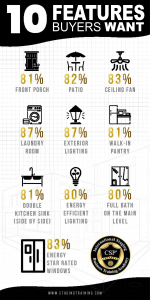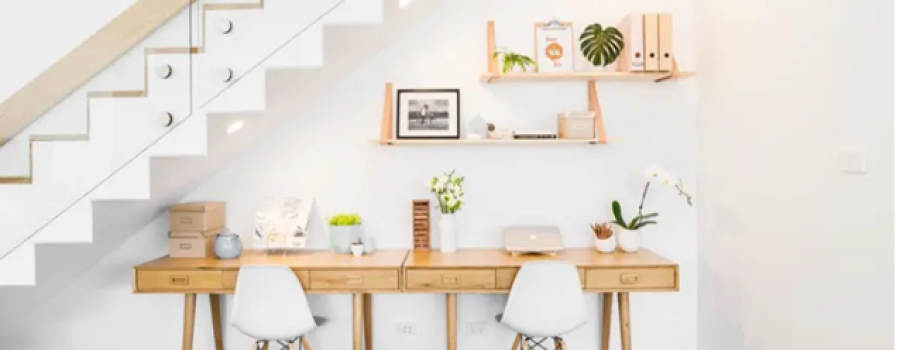In an era of evolving lifestyles and changing home preferences, the traditional home staging industry faces the risk of becoming obsolete if stagers and real estate agents fail to respond to the shifting needs of homebuyers. As people seek more personalized and functional living spaces, it is crucial for industry professionals to adapt their approaches to ensure their relevance and long-term success. Looking at the challenges faced by the home staging industry and the necessary steps stagers and agents must take will help them stay ahead in a rapidly changing market.
Understanding the Changing Landscape
Evolving Lifestyles: Modern lifestyles have undergone significant transformations, driven by factors such as remote work, sustainability concerns, and a desire for flexible living arrangements. According to a survey conducted by the National Association of Realtors, 71% of homebuyers consider a home office essential or desirable, reflecting the need for dedicated spaces to accommodate remote work.
The Rise of DIY: With the abundance of online resources and inspiration, many homeowners are taking on do-it-yourself home improvement projects. The Home Improvement Research Institute reported that 80% of homeowners engaged in some form of DIY home improvement projects in the past year, rather than moving.
Digital Transformation: The increasing reliance on online platforms and virtual tours has altered the way potential buyers interact with properties. In a study conducted by Realtor.com, 87% of homebuyers found photos and virtual tours to be the most useful features when searching for homes online, many agents believe virtual staging (fake photos) helps the online presence minimizing the need for physical staging. What this shows us is, there is a total lack of understanding regarding how people buy with emotions. When 90% of sellers and agents cannot visualize space – even with a photograph it is crucial their emotional needs are met! Touring an empty shell isn’t the best way to sell property.
To Stay Relevant
 Embrace Personalization:
Embrace Personalization:
To reduce/eliminate hobby stagers and Stagents, Professional Stagers must shift their focus from generic staging to customized solutions which cater to individual buyers’ needs. According to a survey by the National Association of Realtors, 53% of buyers prefer a personalized home environment, emphasizing the importance of tailored staging. CSP International Staging Academy, teaches a scientifically proven, proprietary process which equips their graduates with the ability to curate bespoke environments, targeted to the buyer who most likely will buy that property. The barrier they encounter is a budget driven agent who doesn’t understand the full power of a service like this.
Highlight Functionality:
Residential architects reported home features to accommodate multi-generational households increased in popularity the most. As well as making it easier for older homeowners or residents to age in place as their mobility decreases. Demand for features which aid accessibility in the home is a long-term trend—it’s been among the top five most popular home features the past four years. There is increasing need for first floor bedrooms with ensuite, wider doors/hallways, non slip floors, on-grade entry, and ramps/elevators. To meet the demand for adaptable living spaces, home staging professionals should emphasize the functionality and versatility of each room. AIA chief economist, Kermit Baker, Hon. AIA. “Obviously new home technology offerings have influenced residential design trends, but the impact of the recession can still be seen through homeowner interest in better use of existing space.” “Not surprisingly, demand for greater accessibility features continues to be strong,” Baker added. “Whether it’s a result of generally lower mobility or the aging baby-boomer population, homeowners are preparing for the future. According to a survey by Zillow, 32% of homebuyers desire dedicated spaces for specific activities, such as home offices, fitness areas, hobbies, or entertainment zones. Research also shows 87% of buyers want a dedicated laundry room with space to house doggy shower/grooming station, cupboards for storing bedding & towels AND a centre island for crafts.
Integrate Technology:
Recognize the significance of technology in the homebuying process and adapt staging techniques accordingly. Approximately 64million households in the USA are actively using smart home devices in 2023. This is a 10% increase from the previous year, the forecasted growth in this area is 95million within four years. Stagers conducting property consultations should include recommendations for installing electronic locks, home surveillance cameras, alarm systems, security lighting, home router, as well as SMART features for controlling lighting, energy conservation. A report from HI Research Institute states, “in certain product categories, smart home devices have quickly become an aid for the resale value of the home”. Appraisers make what they call “adjustments” when they compare tech-enabled homes with similar but tech-deficient houses. Smart homes command higher prices and may be easier to sell as a result. This will matter increasingly during shifts from a seller’s to buyer’s markets and during a cooler housing market in general”.
Educate and Collaborate:
According to a survey by Houzz, 46% of homeowners seek professional advice during a renovation or decorating project. This is an additional growth market for stagers, jumping about 20% a year. The satisfaction of home improvement boosted consumers’ overall happiness with their homes. NAR shared that 84% of homeowners wanted to spend more time in their upgraded homes, while 69% cited increased enjoyment with their residences; only 39% of homeowners felt satisfied seeing their completed home improvement project and 86% of residents felt motivated to renovate other parts of their homes. As DIY trends continue to grow, stagers should position themselves as valuable sources of expertise beyond the property sale. By offering educational resources like blogs/articles and collaborating with homeowners, they can guide them to achieving a desired result effectively. Kitchen and Bathrooms sell houses so no surprise that 50% of home remodelling projects in 2022 were kitchens and bathrooms. A survey by the National Kitchen and Bath Association revealed that 78% of homeowners consider keeping up with the latest trends important when remodeling a kitchen. Garage doors and increased insultation are often overlooked/undervalued upgrades however they have 100% ROI and increases saleability of property. According to the U.S. Department of Energy, insulation upgrades can save you up to 20% in heating and cooling costs which is a big factor with buyers. CSP International provides opportunities for contractors, decorating and staging professionals to expand their earnings by training to be Residential Renovation Project Managers (RRPM™)
Stay Abreast of Design Trends:
Keeping up with design trends and incorporating them into staging projects is crucial. By design trends I don’t mean decorative items. Stagers can incorporate natural materials and other examples of biophilic design; by using the latest trend in materials, and color palettes, stagers demonstrate their knowledge and relevance to potential buyers. “Home buyers are looking more and more for their homes to provide a sense of well-being,” observed Donald Ruthroff, AIA, founding principal at Design Story Spaces LLC. “They want homes to support their day-to-day health — physically, emotionally and mentally.” Builders are achieving this through walking paths and other outdoor spaces connected to the home. Builders saw a big jump in the demand for exterior amenities, such as patios, decks, and porches, along with increased demand for dedicated home office,— which appeared on the list of buyers’ most-wanted features for the first time this year.
Sustainability and Green Living:
Address the growing interest in sustainability by incorporating eco-friendly elements into staging designs. According to a study by the U.S. Green Building Council, 73% of millennials are willing to pay more for sustainable features. By emphasizing energy-efficient appliances, eco-friendly materials, and sustainable living practices, stagers can appeal to environmentally conscious buyers. CSP International, since 2007, has provided training to its graduates for Eco-Pro (green build) Eco Staging® and Eco Consulting is incorporated in their Room Ready Handbook™
As the way people want to live in homes continues to evolve, it is imperative for industry professionals to be proactive, innovative, and responsive to thrive in this rapidly changing landscape The traditional home staging industry professional must adapt to the changing demands of homebuyers and evolving market dynamics to secure its future. By embracing these aspects stagers and agents can remain relevant and valuable in the eyes of homebuyers.
There is no better time than right now to take the plunge if you are interested in starting a home staging business or training a team member to be your in-house stager at your brokerage. Contact me, Christine Rae today to learn more! Or learn more & get our 65 Steps to Starting A Successful Staging Business ebook.
















 Subscribe Today!
Subscribe Today! 

